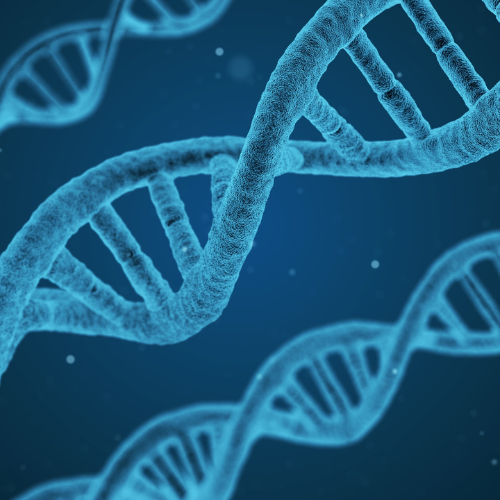
Omega-3 in kids: EPA and DHA protect DNA in children and adolescents

Omega-3s in the blood appear to reduce the risk of DNA damage, according to research conducted among Brazilian 9- to 13-year-olds. A high concentration of EPA and DHA is, in fact, associated with more intact and therefore more stable genetic material. Omega-3 fatty acids could be a protective factor against DNA damage, a phenomenon underlying aging and the development of certain diseases such as cancer, confirming the importance of a healthy diet from childhood.
Data from this study, conducted by researchers at the University of São Paulo (Brazil), were recently published in the scientific journal Food & Function.
Nutrients affect DNA damage and aging
The DNA in the chromosomes of each of our cells accumulates thousands of lesions every day. This happens because cells are continually attacked by harmful environmental factors, such as ultraviolet radiation, ionizing radiation, and numerous chemicals or products of cellular metabolism, which can cause DNA damage.
Degradation of genetic material is one of the mechanisms underlying cellular aging. When damage accumulates in DNA strands, errors in DNA duplication occur, and the forming tissues begin to lose proper function. DNA damage can interfere with essential cellular processes and impair cell viability. Specific DNA lesions can also induce mutations that cause cancer or other diseases, such as neurological diseases.
According to studies conducted in recent years, some nutrients may promote increased DNA breakdown and aging, while others appear to have a protective effect due to their ability to counteract free radicals, the main authors of injury. Among the molecules that can perform this function are some vitamins with antioxidant action such as Vitamin C, phytocompounds such as polyphenols, and omega-3 fatty acids. According to research conducted in 2013, a diet characterized by a low concentration of omega-6 in favor of omega-3 is associated with greater stability of telomeres, the terminal regions of chromosomes, the erosion of which is linked to aging and the onset of certain pathological conditions including cancer.
High plasma concentrations of omega-3 are protective for DNA in young people
By studying blood concentrations of vitamins, polyunsaturated fatty acids and the extent of DNA damage in healthy Brazilian children and adolescents, the researchers found that higher levels of EPA and DHA in the blood were associated with lower risk of damage to genetic material. Similar results have been obtained previously from in vitro studies conducted on vascular tissue cells and endothelial cells in diabetic subjects.
But the Brazilian work is the first of the in vivo work to investigate the relationship with omega-3s in healthy adolescents. Emerging data suggest that implementing public policies of nutrition education to improve nutritional status can help prevent the development of diseases linked to major DNA damage, the research authors themselves said. Indeed, in Brazil, in recent decades, as elsewhere in developed countries, the eating style has shifted toward processed products that are low in micronutrients and high in saturated fat, sugar and salt. According to omega-3 expert William S. Harris, of the Sanford School of Medicine (University of South Dakota) and inventor of the HS-Omega-3 Index®, the study offers a compelling mechanism of action to explain some of the epidemiological effects of omega-3 that have been observed over the years.
According to Harris, what is known so far, namely that people with higher levels of omega-3s live longer, can be related to the results of this research. High levels of omega-3 are associated with a protective mechanism that keeps DNA and its functioning intact, contributing to healthy aging and slowing the rate of chromosome damage, promoting health.
Some details of the study
The researchers recruited 151 boys and girls aged 9 to 13 in the city of Ribeirão Preto. Of these 141 were deemed eligible to be included in the study. All of the youths had access to city water, sanitation, electricity, and Internet living in an area with a Municipal Human Development Index (MHDP) of 0.8.
The MHDP Parameter is an index calculated by the United Nations, which estimates the Development Index in different regions, and includes factors such as life expectancy and years of schooling. This would rank the home areas of the children involved in the study as among the wealthiest in Brazil. Using statistical analysis, the researchers investigated whether levels of the omega-3s EPA and DHA, vitamin A, beta carotene (a vitamin A precursor) and riboflavin (or vitamin B2) correlated with the rate of DNA "breaks."
Damage to genetic material was assessed in the laboratory using a single-cell gel electrophoresis technique: the so-called comet test. While the results of these tests showed an inverse relationship between the amount of EPA and DHA in the blood and DNA damage, no such link emerged when studying the effect of vitamin A, beta-carotene, and Vitamin B2.
Kids and nutrition: omega-3s in blood could protect chromosomes
This study found an association between DNA damage and blood levels of DHA and EPA, showing that omega-3s are inversely associated with DNA damage in Brazilian children and adolescents and may be a protective factor against the development of future diseases. Increased consumption of EPA and DHA, could therefore be a protective factor against chromosome aging and the development of related diseases.
This highlights the importance of healthy eating from childhood onward, including through the increase of public policies on nutrition education to improve nutritional status.
Source: Tamiris Trevisan de Barros et. al. "DNA damage is inversely associated with blood levels of DHA and EPA fatty acids in Brazilian children and adolescents", Food and Function Kiecolt-Glaser JK, Epel ES, Belury MA, Andridge R, Lin J, Glaser R, Malarkey WB, Hwang BS, Blackburn E. "Omega-3 fatty acids, oxidative stress, and leukocyte telomere length: A randomized controlled trial". Brain Behav Immun





